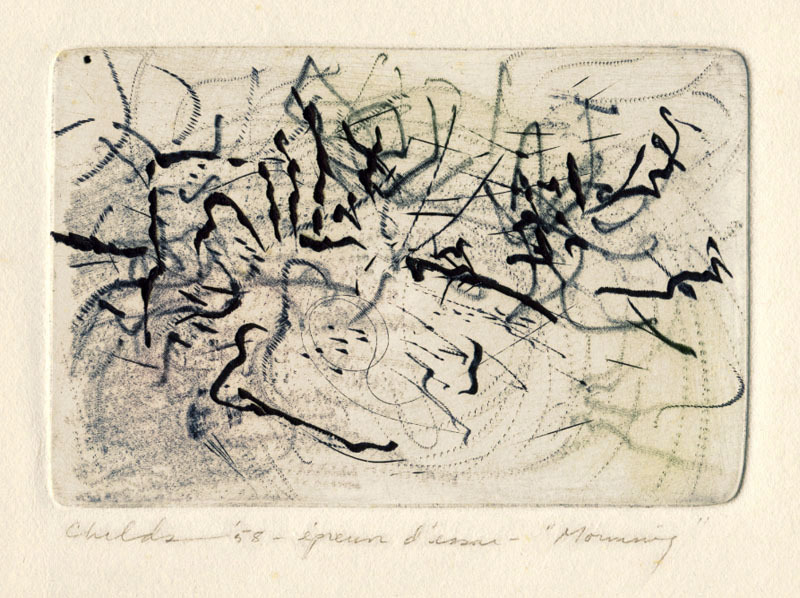
19th, 20th & 21st Century Fine Prints
707-546-7352 · fax 707-546-7924 · web: www.annexgalleries.com · email: artannex@aol.com
Morning by Bernard Childs

Morning
Bernard Childs
Morning
Bernard Childs
1910 - 1985 (biography)In the 1950s Childs developed an abstract picture language, in which he worked with archetypical signs and symbols and with the methods of surrealistic automatism. Childs used electrically powered tools to work directly on his plates. He lent velvet-like structures and a vivid, skilful, gestural line direction to his prints.
"Morning" (also titled "L'Aube"and "Dawn") was done by Bernard Childs in ten variant artist's proofs, printed at his studio in Paris. He experimented with 5 different colors, this with a light blue-green. This image was included in four various catalogues and two impressions are known to be in museums.
Bernard Childs met the Danish silversmith Peer Smed and later remarked: “From this great craftsman I learned the beauty of metals, the feel of them in my hands, the excitement of fashioning them and the use of the special tools that bring them to life.” He later mastered industrial tools and metalworking while employed as a machinist.
Childs moved to Europe in 1951, living primarily in Paris for the next fifteen years. In 1954, while spending a few months at the innovative intaglio workshop Atelier 17 in Paris, Childs combined his interest in metal and knowledge of industrial tools to make experimental intaglio prints, using power tools to incise the plates. He referred to these prints as “power drypoints.”
James Fitzsimmons wrote the following response to Frumenti: “There are three things I would like to note about Childs’ work. He uses line as others use modulations of the voice to communicate nuances of feeling. He brings to his work a painter’s organic sense of color. He is not content to perform beautifully, like a ballet dancer, but has something to say. I think he is making landscapes—“Abstract”, interior landscape, to be sure—where the same interplay of forces may be discerned as in the world around, and the same breath of life animates the lines.”


